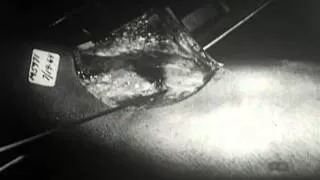The purpose of this presentation is to discuss the types of narcotic deaths and drugs encountered by Dr. Milton Helpern in his post as Chief Medical Examiner for New York City, and to describe internal and external body changes resulting from narcotism. This objective is achieved with the use of photographs of overdose victims and the equipment found and used by addicts. The importance of noting the circumstances under which the body is found and the condition of the body to aid in establishing the diagnosis of death from narcotism is stressed. According to this presentation, narcotic addiction, which has been a problem for many years, has increased markedly within the last twenty years. Some deaths are the result of drug overdose, while others involve drug-related violence. The correlation between the violence and the society in which the addict lives is explored briefly. Dr. Helpern notes that in 1930 heroin was mixed with milk sugar, whereas recent samples checked showed a mixture of heroin, quinine, and mannitol. The use of amphetamines and marijuana is discussed briefly and the equipment used by addicts is described and illustrated. Dr. Helpern then shows photographs of overdose victims and describes the circumstances under which bodies were found. With the addition of information gained by his examination of the body, the diagnosis of death by narcotism is made. The program notes that toxicological test results which confirm the diagnosis are usually not available for several weeks. The skin around the puncture site is incised to demonstrate the effects of the intravenous injections on the veins and subcutaneous tissues of those who inject drugs. Produced by Emory University and National Medical Audiovisual Center, USPHS. Learn more about this film and search its transcript at NLM Digital Collections: http://resource.nlm.nih.gov/7600368A Learn more about the National Library of Medicine's historical audiovisuals program at: https://www.nlm.nih.gov/hmd/collections/films
- 4 views

